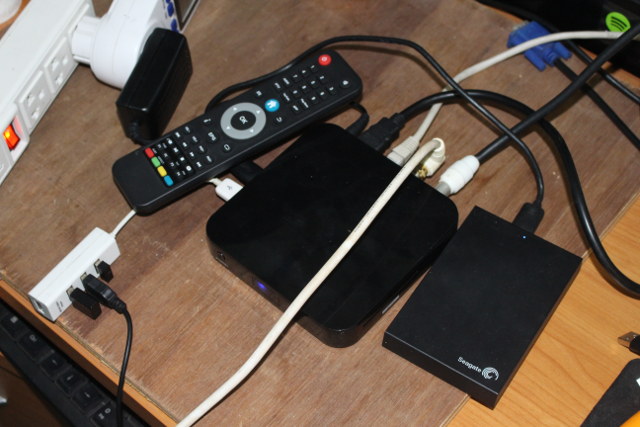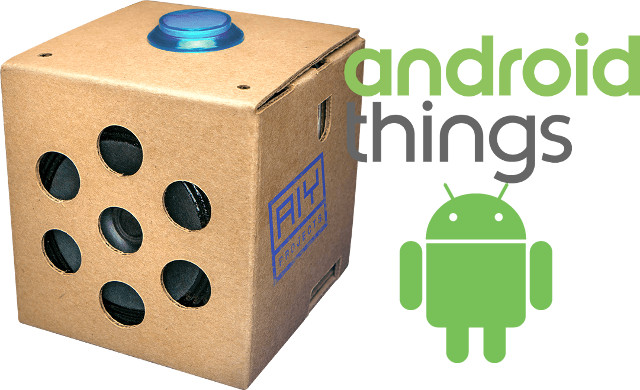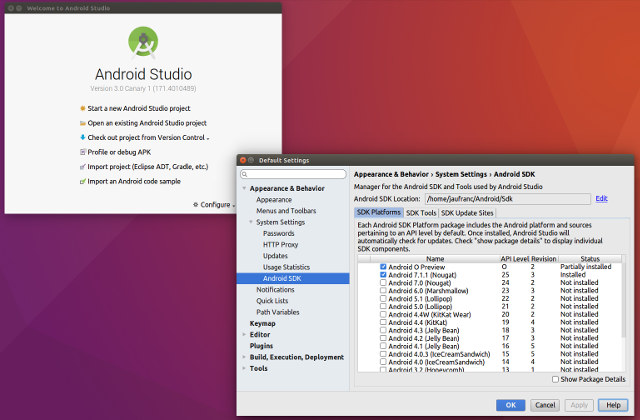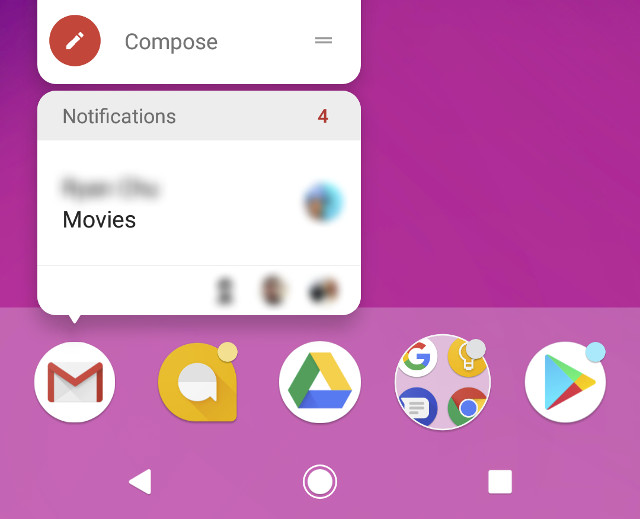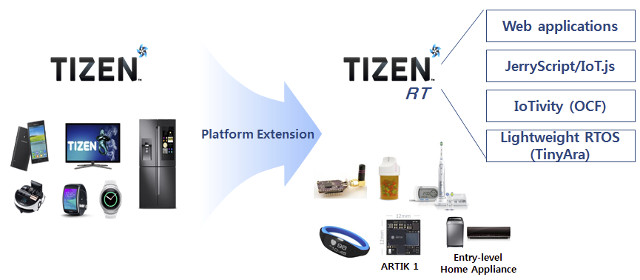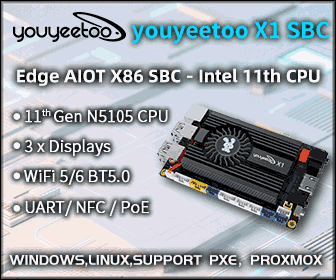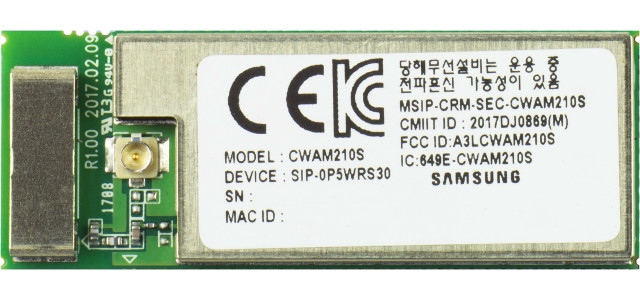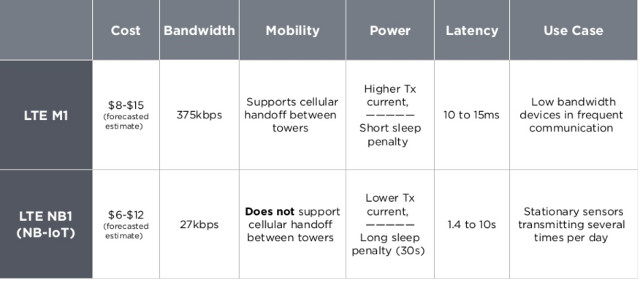Sen5 is one of the first Android TV boxes powered by Amlogic S905D processor, and comes with two tuners (DVB-C/T/T2 and DVB-T/T2) with two demodulators that should allow for recording on one tuner, while watching the other, or recording two channels at the same time. We’ve already check out the hardware in the first part of the review, and seen a glimpse of the neat user interface, so today I’ll report about my experience with the device. Sen5 Android Set-Top Box First Boot, Setup Wizard, & First Impressions The STB comes with two USB ports so I used one for the hard drive, a necessity if you plan to use the PVR function, and connected a USB hub to the other with RF dongles for an air mouse and a gamepad, as well as a USB keyboard to take screenshots. I also connected Ethernet and HDMI cables, as well as […]
Android Things Developer Preview 4 Released with Google Assistant SDK Support
Earlier this month, Google released a preview of the Google Assistant SDK that works on boards running Debian like the Raspberry Pi 3, and even launched AIY Project Voice Kit for the later. You can now play with Google Assistant on Android Things as the company has just released Android Things Developer Preview 4 with support for Google Assistant SDK. The operating systems works on any Android Things certified devices, but the example instructions for Google Assistant API on Android Things also include steps to use Raspberry Pi 3 board together with AIY Projects Voice kit. The developer preview 4 also adds I2S to the peripheral I/O API and is demonstrated in the aforementioned example, and new hardware support with NXP i.MX7D based Pico Board equipped WiFi & Bluetooth, Ethernet, USB ports, an audio jack, and an I/O expansion port. Android Things DP4 also brings the ability for developers to […]
Banana Pi BPI-M64 Board Gets Allwinner R18 Processor with Google Cloud IoT Core Support
Banana Pi BPI-M64 board was launched with Allwinner A64 processor, but a few days ago, I noticed the board got an option for Allwinner R18. Both processors are likely very similar since they are pin-to-pin compatible, and Pine64 was first seen with Allwinner R18, so I did not really feel it was newsworthy. But today, Google announced Google Cloud IoT Core cloud service working with a few app partners such as Helium and Losant, as well as several device partners including ARM, Marvell, Microchip, Mongoose OS, NXP… and Allwinner, having just announced the release of an Allwinner R18 SDK with libraries supporting Google Cloud IoT Core. Let’s go through the board specifications first which are exactly the same as for the original BPI-M64 board, except for the processor: SoC – Allwinner R18 quad core ARM Cortex A53 processor with Mali-400MP2 GPU System Memory – 2GB DDR3 Storage – 8GB eMMC […]
Android Studio 3.0 Preview Release with Support for Kotlin Programming Language, Android O Preview Images
Most Android apps used to be programmed in Java with the Eclipse IDE, then Google introduced Android Studio in 2013 which has now replaced the latter, and with the release of Android Studio 3.0 Canary 1 preview, the company is now offering developers to program apps using Kotlin language instead of Java. Kotlin programming language is 100% compatible with Java language, and you can even mix Kotlin and Java in your code. Kotlin can make your code much more simple while declaring classes, and it has a few other improvements over Java. Android Studio also include a Java to Kotlin converter. The language has already been used by Expedia, Flipboard, Pinterest, Square, and others. Android Studio 3.0 also brings many other improvement, such as performance profiling tools for the CPU, memory, and networks showing your app performance in real-time, and faster Gradle builds for large sized app projects. Android Studio […]
Google Releases Android O Developer Preview 2, Announces Android Go for Low-End Devices, TensorFlow Lite
After the first Android O developer preview released in March, Google has just released the second developer preview during Google I/O 2017, which on top of features like PiP (picture-in-picture), notifications channels, autofill, and others found in the first preview, adds notifications dots, a new Android TV home screen, smart text selection, and soon TensorFlow Lite. Google also introduced Android Go project optimized for devices with 512 to 1GB RAM. Notifications dots (aka Notification Badges) are small dots that show on the top right of app icons – in supported launchers – in case a notification is available. You can then long press the icon to check out the notifications for the app, and dismiss or act on notifications. The feature can be disabled in the settings. Android TV “O” also gets a new launcher that allegedly “makes it easy to find, preview, and watch content provided by apps”. The […]
Samsung Unveils Tizen 4.0 with .NET Framework, Low End IoT Devices Support
We’ve already seen the announcement of Samsung ARTIK 053 WiFi module with Tizen RT this morning, but it appears that Tizen RT (Real Time) is part of a Tizen 4.0 that will add support to IoT devices, as well as introduce changes from the developers’ perspective. Samsung Electronics talked a bit more about Tizen Next (Tizen 4.0) at the Tizen Developer Conference (TDC) 2017 taking in place on May 16-17 in San Francisco. Few details are provided in the press released, but we could learn that “the Tizen 4.0 platform has been extended to Tizen RT (Real-Time) to involve high-end products such as TVs and mobile devices as well as low-end products such as thermostats, scales, bulbs, and more”. Tizen RT page explains that the real-time operating system is designed to run on Cortex M/R MCU with less than 2 MB RAM, less than 16 MB flash, and consists of […]
Samsung ARTIK 053 WiFi IoT Module Runs Tizen RT on an ARM Cortex R4 MCU
Samsung has just introduced the latest member of its Artik family at IoT World 2017. ARTIK 053 is a WiFi module powered by an ARM Cortex R4 wireless micro-controller @ 320 MHz with hardware based security, GPIO, SPI, and I2C ports, and running Tizen RT real-time operating system. Artik 053 module specifications: MCU – 32-bit ARM Cortex R4 @ 320MHz with 1280 KB RAM for general use, 128 KB RAM for global IPC data (likely Samsung Exynos i T200, or a variant without an ARM Cortex M0+ core) Storage – 8 MB flash Connectivity – 802.11 b/g/n WiFi @ 2.4 GHz Expansion – 29 dedicated GPIO ports, 2x SPI, 4x UART (2-pin), 4x ADC, 1x JTAG, 2x I2C Security – AES/DES/TDES, SHA-1/SHA-2, PKA (Public Key Accelerator), PRNG/DTRNG (Random Number Generators), Secure key storage, Physical Unclonable Function (PUF) Power Supply – 5 to 12VDC input voltage Dimensions – 40 x 15 x […]
The Future of Cellular IoT Explained – LTE M1, LTE NB-IoT, eSIM, and Battery Life Hype
Telecom companies also want their share of the IoT business, but with 2G to 4G cellular technology often being too power hungry and/or expensive for this market, 2G on-going – or upcoming – sunset depending on your location, LTE Cat M1 and LTE Cat NB1 (aka NB-IoT) standards have been developed, and used in products like Pycom FiPy board, and SARA-R4 and SARA-M2 modules. If you want to have an overview learn about the new LTE IoT standards and the future of cellular IoT, Particle has published a useful presentation – embedded below – dealing with both, as well as eSIM (Embedded SIM), 2G sunset, and battery life expectations. The main takeaways from my reading of the presentation: LTE NB1 is better suited for low power stationary sensors transmitting a small amount of data a few times a day. Requires new hardware and software LTE M1 can be used for […]


